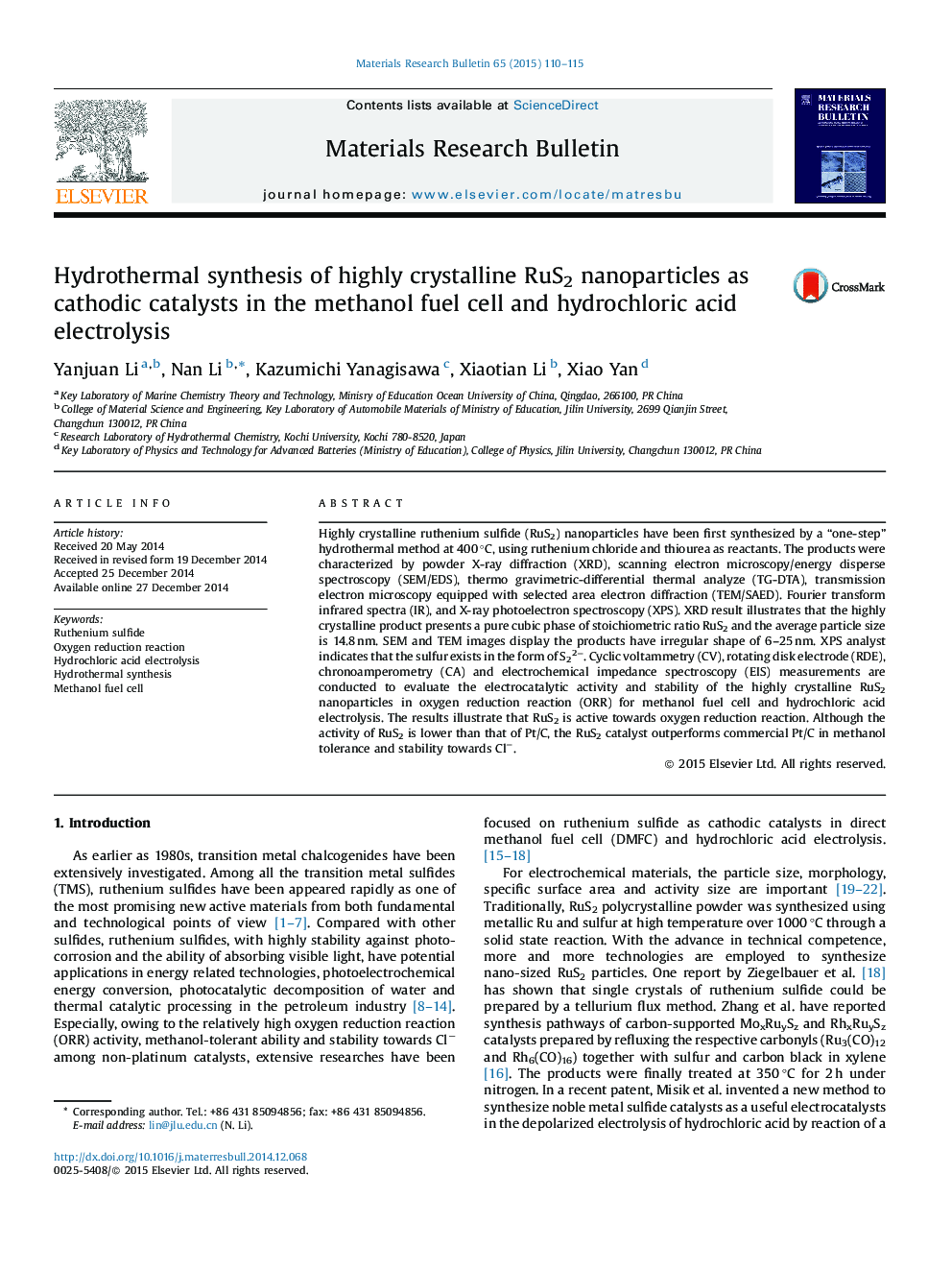| کد مقاله | کد نشریه | سال انتشار | مقاله انگلیسی | نسخه تمام متن |
|---|---|---|---|---|
| 1487679 | 1510710 | 2015 | 6 صفحه PDF | دانلود رایگان |

• Highly crystalline RuS2 nanoparticles have been first synthesized by a “one-step” hydrothermal method.
• The product presents a pure cubic phase of stoichiometric ratio RuS2 with average particle size of 14.8 nm.
• RuS2 nanoparticles were used as cathodic catalysts in methanol fuel cell and hydrochloric acid electrolysis.
• The catalyst outperforms commercial Pt/C in methanol tolerance and stability towards Cl−.
Highly crystalline ruthenium sulfide (RuS2) nanoparticles have been first synthesized by a “one-step” hydrothermal method at 400 °C, using ruthenium chloride and thiourea as reactants. The products were characterized by powder X-ray diffraction (XRD), scanning electron microscopy/energy disperse spectroscopy (SEM/EDS), thermo gravimetric-differential thermal analyze (TG-DTA), transmission electron microscopy equipped with selected area electron diffraction (TEM/SAED). Fourier transform infrared spectra (IR), and X-ray photoelectron spectroscopy (XPS). XRD result illustrates that the highly crystalline product presents a pure cubic phase of stoichiometric ratio RuS2 and the average particle size is 14.8 nm. SEM and TEM images display the products have irregular shape of 6–25 nm. XPS analyst indicates that the sulfur exists in the form of S22−. Cyclic voltammetry (CV), rotating disk electrode (RDE), chronoamperometry (CA) and electrochemical impedance spectroscopy (EIS) measurements are conducted to evaluate the electrocatalytic activity and stability of the highly crystalline RuS2 nanoparticles in oxygen reduction reaction (ORR) for methanol fuel cell and hydrochloric acid electrolysis. The results illustrate that RuS2 is active towards oxygen reduction reaction. Although the activity of RuS2 is lower than that of Pt/C, the RuS2 catalyst outperforms commercial Pt/C in methanol tolerance and stability towards Cl−.
Figure optionsDownload as PowerPoint slide
Journal: Materials Research Bulletin - Volume 65, May 2015, Pages 110–115